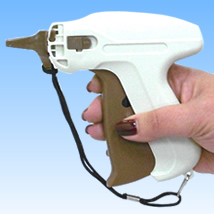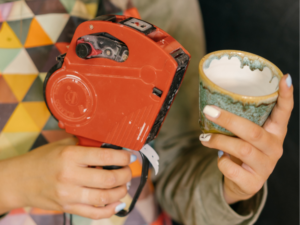When you fail to properly mark your merchandise with pricing, all you’re doing is making shopping inconvenient for your customers. Shoppers enter your store to browse and make purchases. However, they need to know the price to decide if they want to buy items. If it isn’t readily apparent, they might leave the store disgruntled and empty-handed rather than taking the initiative to ask about pricing.
As the retailer, it is incumbent on you to make the shopping experience positive. This means prices must be clearly marked. One way to do this is by using tagging guns or tag attachers. How do they work? On which types of products can you use tagging guns? Why should you use tag ging guns instead of other pricing options? Here’s what you need to know about how tagging guns works.
ging guns instead of other pricing options? Here’s what you need to know about how tagging guns works.
How Tagging Guns Work
Tagging guns are relatively inexpensive and easy to use. You can order a basic tagging gun from Specialty Store Services for as little as about ten bucks, including additional replacement needles. If your item is made of fine fabric, like lingerie, baby clothes, or things that need a little more TLC, you can order a Specialty Store Services Fine Fabric Tagging Gun.
Using the tagging gun is pretty simple. To start, simply remove the safety cap from the needle and feed the small end of the fastener strip into the slot at the base of the needle. From there, you’ll thread the needle through your price tag and then push it through the fabric.
Pull the trigger, and the small end of a fastener will be pushed through the price tag and the fabric. When you remove the needle, the fastener should detach from the strip, or you may have to push a fastener release button, depending on your model of tagging gun. Once you’ve done it a few times, you’ll find the process quick and easy.
How to Use a Price Tag Gun
Tagging guns are most often used on clothing, but they can be used on any fabric or plush items, including shoes, linens, stuffed animals, throw pillows, and more. You might even be able to use them on items like furniture, lampshades, camping gear, and such, but one major caveat is that the needle used to puncture items will leave a hole.
This shouldn’t be a problem as long as you place tags appropriately. On clothing, you can add your tags to existing garment tags inside clothing, where holes won’t matter. For tagless garments or other items, look for seams where the hole will be hidden. Make sure to use a fine fabric tagging gun for delicate textiles like silk, satin, and chiffon that could be irreparably damaged by larger holes.
Why Choose a Tagging Gun?
You can always use safety pins instead of a tagging gun, but these might leave larger holes, and they’re all too easy for shoppers to remove for nefarious purposes (like swapping price tags). Price stickers are another option, but these could leave behind adhesive that permanently mars textiles. Tagging guns are inexpensive and easy to use, making them ideal for pricing purposes.
If you are a Specialty Store Services customer who would like more information on Tagging Guns and Supplies, you can shop for all your tagging supply needs on our website, Specialty Store Services, and if you have a question that you would like an immediate answer, you can Live Chat, or phone us at 800-999-0771.

